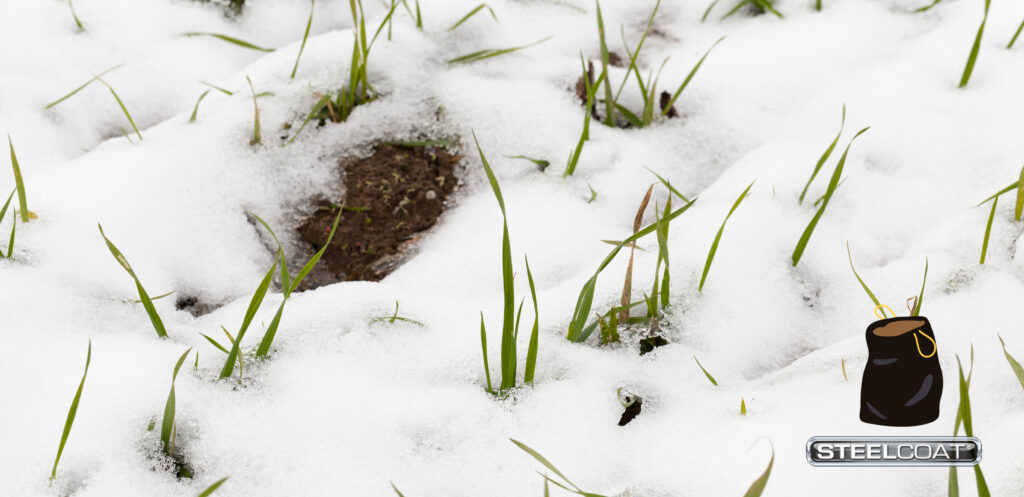
Getting your lawn ready for warm weather can feel daunting, so we’ve broken down each step to make it a little more straightforward. Before you get started, remember that all yards are different and can require distinct care and products. We do recommend researching specific care tips for your type of grass and climate.
Here are nine steps to get you on your way to a lush lawn.
- Pick up debris. Once the last of the snow has melted away, go through your yard, and pick up any branches or litter that may have gotten trapped all winter under snow piles.
- Lightly rake. On your first rake-though be gentle with your grass. It is easy to accidentally rip the blades out of the soil when it is wet. To avoid damage, give your yard a quick brush. Light raking will help it breathe and promote growth.
- Check for mold. Once your yard has been cleaned up, check for any molds that might have grown since the fall. Snow mold is a common mold that appears as pink or gray spots throughout your yard. As you may have guessed, this sometimes happens to yards after heavy winters. Snow mold is dealt with by gently raking it to give healthy grass room to grow. If you notice other molds, do your research or contact a lawn care professional before treating anything. You will want to deal with any molds before moving forward.
- Rake again when dry. Once you’re sure the ground has completely thawed and the soil is not too wet, you can rake your yard as normal. Focus on clearing matted grass to avoid suffocating new growth.
- Aerate. Aerating your lawn is a good way to give it a boost in the spring. Aeration is the process of penetrating the soil to allow air and water to reach the grass roots and help them grow. This step is something you may want to give extra consideration if your grass and soil are compacted. Aerating does not need to be done yearly, but it can lead to better grass health.
- Seed. Re-seed any parts of the lawn that are bare or patchy. Make sure to be attentive to these areas to make sure the grass is growing properly. This process takes around five weeks.
- Fertilize. Fertilizing gives your grass a good dose of nutrients. Keep in mind that every yard is different. The best time to fertilize and the best type of fertilizer is something you’ll need to research before buying anything for your lawn. You will also want to be mindful of when you last fertilized; you may not need to add more.
- Water on a schedule. Typical grass types need 1.5 in of water per week. You don’t need to water your yard every day, but it is a good idea to set a schedule to make sure your grass is getting enough moisture. You’ll need to take into account any rainfall throughout the week and adjust your watering schedule accordingly. Watering your lawn in the morning is usually recommended for optimal results.
- Mow. Before you get to mowing, make sure your lawnmower is ready to go. Do any tuning up or repairs necessary before your grass gets too long. When deciding when to mow, you’ll need to find out what type of grass you have. Research the best length to keep your type of grass and when to cut it.
How can Steelcoat® help? We’ve got quality Trash Bags and Contractor Bags to help you when clearing up your yard. Don’t forget, next week we’ll be walking you through how to prepare your garden for spring. Follow us at Steelcoat Products to see all our updates.
